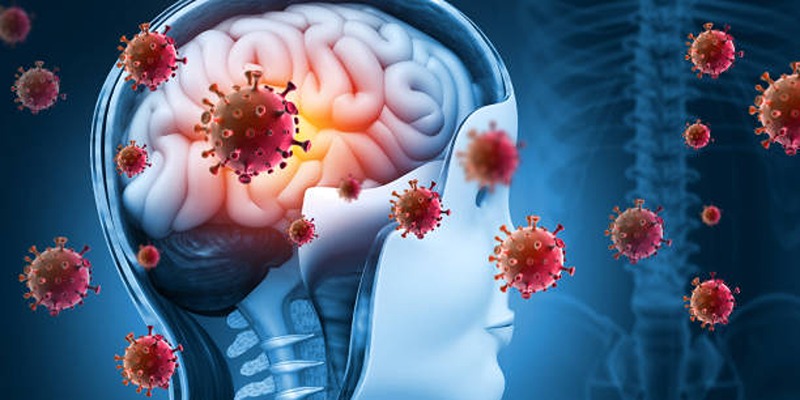Understanding Cushing's Syndrome: Key Signs and Symptoms to Watch For
Advertisement
Cushing’s syndrome, also called hypercortisolism, is a hormonal disorder that arises as the result of a prolonged exposure to high cortisol levels. This condition may ensue from use of corticosteroid drugs or/and from hypercortisolism, that may stem from disease affecting the adrenal glands. The condition presents itself in various ways which may manifest in physically, emotionally or even metabolically, something that would seriously affect the quality of one’s life. It is crucial to detect the problem in an early stage and pay a lot of attention to the signs of the symptom.
Causes of Cushing's Syndrome
Cushing's syndrome stems from a variety of underlying factors, which can be classified into two main categories: endogenous (internal) and exogenous (external). Below, we focus on the endogenous causes—those originating within the body:
- Pituitary Adenomas: These noncancerous tumors in the pituitary gland trigger an overproduction of adrenocorticotropic hormone (ACTH), which, in turn, stimulates excessive cortisol release.
- Adrenal Gland Tumors: Growths in the adrenal glands—whether benign or malignant—can directly cause an overproduction of cortisol.
- Ectopic ACTH Syndrome: Certain tumors located outside the adrenal or pituitary glands, such as in the lungs or pancreas, may produce ACTH, leading to elevated cortisol levels.
Signs and Symptoms of Cushing's Syndrome

Cushing's syndrome presents a range of symptoms that vary depending on the severity and duration of excess cortisol production. Here are the most common indicators to be aware of:
Weight Gain and Fat Distribution
Cushing’s syndrome patients usually develop visible obesity which is mainly central and facial; the face often becomes rounded and shin-like, hence nicknamed ‘moon face’. This is because cortisol the stress hormone involved in the central regulation of fat deposition tends to mobilize adipose tissue at different sites. Thus the fat develops around these places though other areas may appear skinny, like the arms and the legs.
Moreover, some patients may also gain excessive fat in the upper back area as a buffalo hump , From physical viewpoint, it will be uncomfortable if not painful, from psychological aspect, it may cause much emotional trouble.
Changes in Appearance
The abnormal fat distribution associated with Cushing's syndrome often leads to additional visible changes in appearance, such as the development of stretch marks, medically referred to as striae. These marks are caused by rapid skin stretching and often appear prominently on the abdomen, thighs, breasts, and arms. Unlike typical stretch marks, the ones associated with Cushing's syndrome are often deep pink, purple, or dark blue in color, making them more noticeable.
Furthermore, women may experience increased facial hair growth, known as hirsutism, often appearing on the chin, upper lip, and jawline, which can be especially troubling for those affected.
Skin Changes
The skin often becomes thinner and more fragile, leading to easy bruising even with minor bumps or injuries. This fragility is due to the decreased production of skin cells and collagen, which are essential for maintaining skin strength and elasticity. Wounds and cuts may also take noticeably longer to heal, as excess cortisol interferes with the body's normal repair processes. The combination of these factors makes the skin more vulnerable to damage, leaving individuals prone to frequent abrasions, infections, and slow recovery times.
Muscle Weakness
Cortisol works alongside insulin to regulate the conversion of glucose into energy for the body. However, when cortisol levels are excessively high, this delicate balance is disrupted. The body may begin to break down muscle tissue to provide energy, leading to reduced muscle mass and strength. Over time, this can result in muscle weakness and wasting, medically known as muscle atrophy. Individuals may find it increasingly difficult to perform everyday activities, such as climbing stairs, lifting objects, or even standing for extended periods.
Mood Changes
Cushing's syndrome can have profound effects on emotional well-being, as high cortisol levels influence the brain's regulation of mood and behavior. Individuals may experience persistent irritability, heightened anxiety, or even episodes of depression. These mood swings can feel unpredictable and difficult to control, often adding stress to personal relationships and daily life. Additionally, many individuals report feelings of restlessness, a reduced ability to cope with stress, and overwhelming fatigue even after adequate sleep.
Elevated Blood Pressure and Blood Sugar
Cortisol plays a key role in maintaining blood pressure and regulating blood sugar levels. However, when cortisol levels are too high, these systems can become dysregulated, leading to elevated blood pressure (hypertension) and higher blood sugar levels. Over time, this places individuals at greater risk of developing serious health conditions such as diabetes and cardiovascular disease. High blood pressure can strain the heart and blood vessels, while persistent elevations in blood sugar can damage organs and tissues. For this reason, monitoring and controlling these levels is a critical aspect of managing Cushing's syndrome to reduce long-term health risks.
Hormonal Disruptions
Prolonged exposure to high cortisol levels can disrupt the balance of other essential hormones in the body, such as estrogen. In women, this may lead to irregular menstrual cycles or even the absence of periods (amenorrhea). These hormonal imbalances can affect fertility and overall reproductive health.
Additionally, the suppression of growth hormone and thyroid hormones can contribute to weight changes, fatigue, and a slower metabolism. The wide-ranging effects of these disruptions highlight the importance of addressing hormonal imbalances as part of Cushing's syndrome treatment.
Diagnosing Cushing's Syndrome
Accurate and timely diagnosis of Cushing's syndrome is crucial for effective treatment. Healthcare professionals typically rely on a combination of the following methods to confirm the condition:
- Medical History and Physical Exam: A comprehensive review of symptoms, combined with a physical examination, helps identify key indicators of the syndrome.
- Laboratory Tests:
- 24-Hour Urine Cortisol Test: Analyzes cortisol levels in a full day's urine sample to detect abnormalities.
- Late-Night Salivary Cortisol Test: Measures cortisol levels in a saliva sample collected at night, when levels should be low.
- Dexamethasone Suppression Test: Evaluates how cortisol levels respond to a synthetic steroid, identifying irregularities.
- Imaging Studies: Advanced imaging techniques, such as magnetic resonance imaging (MRI) or computed tomography (CT) scans, help locate potential tumors in the pituitary or adrenal glands.
Treatment Options for Cushing's Syndrome
The best treatment for Cushing's syndrome depends on its underlying cause. Common approaches include:
- Surgery: Surgical removal of pituitary or adrenal gland tumors is often the primary treatment and can be highly effective.
- Medications: When surgery is not possible, medications can be prescribed to either reduce cortisol production or block its effects on the body.
- Radiation Therapy: If a pituitary tumor cannot be fully removed, radiation therapy may be used to diminish its activity.
- Lifestyle Changes: While not a cure, adopting a healthy diet and staying active can help alleviate symptoms and improve overall well-being.
Conclusion
Cushing's syndrome is a serious yet treatable condition. Recognizing its symptoms is the first step toward a timely diagnosis and effective treatment. If you experience persistent changes in weight, skin, mood, or overall health, don’t hesitate to seek medical advice. Early intervention can help identify the condition and initiate the appropriate care. By collaborating with healthcare professionals, individuals can manage their symptoms, improve their well-being, and regain control of their lives.
On this page
Causes of Cushing's Syndrome Signs and Symptoms of Cushing's Syndrome Weight Gain and Fat Distribution Changes in Appearance Skin Changes Muscle Weakness Mood Changes Elevated Blood Pressure and Blood Sugar Hormonal Disruptions Diagnosing Cushing's Syndrome Treatment Options for Cushing's Syndrome ConclusionAdvertisement













